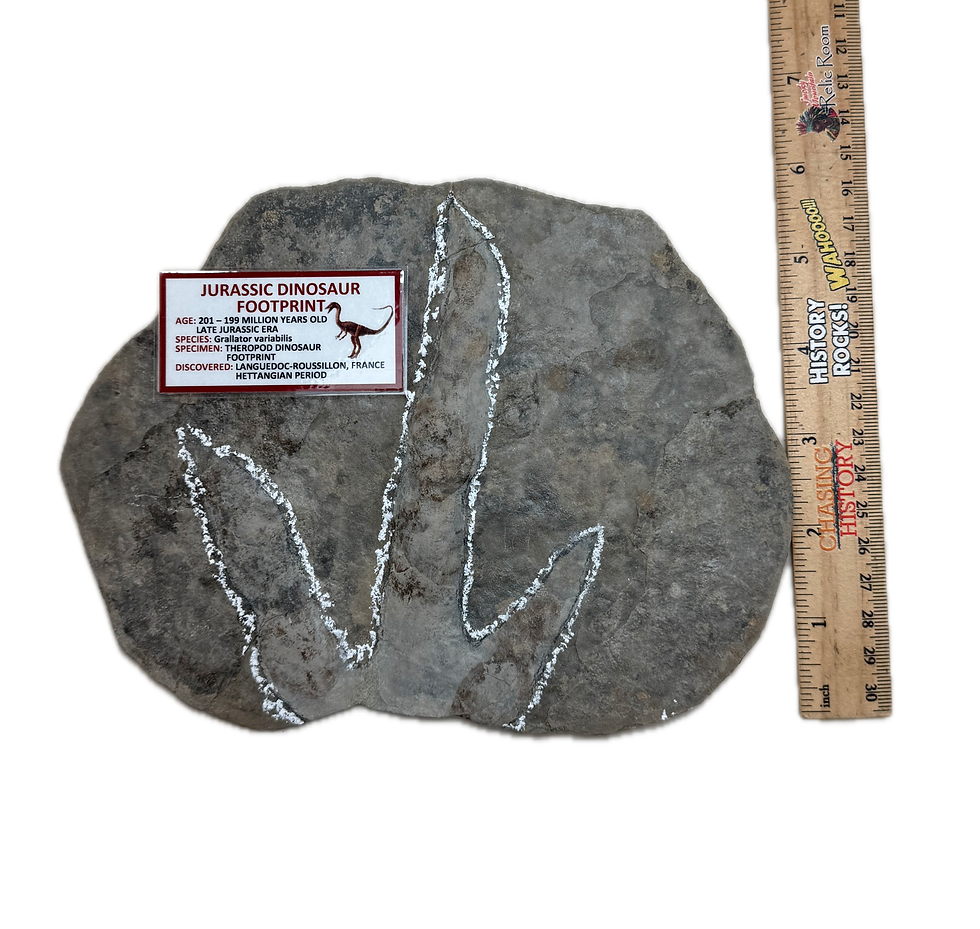Click here for more information!
Woolly Mammoth Hair
Age - 40,000 - 20,000 Years Old
Species - Mammuthis Primigenius
Discovered - Taimyr, Siberia Russia
* More Information *
The Woolly Mammoth
Preservation of the hair is due to the permanently frozen ground (permafrost) in which it was discovered.
Woolly mammoth also called the Tundra Mammoth, was a species of mammoth that disappeared at the end of the Pleistocene (8,000 B.C).
Woolly mammoths had several adaptations to the cold, most famously the thick layer of shaggy hair, up to 1 meter in length, with a fine underwool, for which the Woolly Mammoth is named.
The coats were similar to those of muskoxen, and it is likely mammoths molted in summer.
The woolly mammoth is a species of mammoth that lived during the Pleistocene until its extinction in the Holocene epoch. It was one of the last in a line of mammoth species, beginning with Mammuthus subplanifrons in the early Pliocene. The woolly mammoth began to diverge from the steppe mammoth about 800,000 years ago in East Asia. Its closest extant relative is the Asian elephant. The appearance and behavior of this species are among the best-studied of any prehistoric animal because of the discovery of frozen carcasses in Siberia and Alaska, as well as skeletons, teeth, stomach contents, dung, and depiction from life in prehistoric cave paintings. Mammoth remains had long been known in Asia before they became known to Europeans in the 17th century. The origin of these remains was long a matter of debate and often explained as being remains of legendary creatures. The mammoth was identified as an extinct species of elephant by Georges Cuvier in 1796.
* Woolly Mammoth Hair *
The coat consisted of an outer layer of long, coarse "guard hair", which was 30 cm (12 in) on the upper part of the body, up to 90 cm (35 in) in length on the flanks and underside, and 0.5 mm (0.020 in) in diameter, and a denser inner layer of shorter, slightly curly under-wool, up to 8 cm (3.1 in) long and 0.05 mm (0.0020 in) in diameter. The hairs on the upper leg were up to 38 cm (15 in) long, and those of the feet were 15 cm (5.9 in) long, reaching the toes. The hairs on the head were relatively short, but longer on the underside and the sides of the trunk. The tail was extended by coarse hairs up to 60 cm (24 in) long, which were thicker than the guard hairs. The woolly mammoth likely molted seasonally, and the heaviest fur was shed during spring. Since mammoth carcasses were more likely to be preserved, possibly only the winter coat has been preserved in frozen specimens. Modern elephants have much less hair, though juveniles have more extensive coverage of hair than adults. Comparison between the over-hairs of woolly mammoths and extant elephants show that they did not differ much in overall morphology. Woolly mammoths had numerous sebaceous glands in their skin, which secreted oils into their hair; this would have improved the wool's insulation, repelled water, and given the fur a glossy sheen.
Preserved woolly mammoth fur is orange-brown, but this is believed to be an artifact from the bleaching of pigment during burial. The amount of pigmentation varied from hair to hair and within each hair. A 2006 study sequenced the Mc1r gene (which influences hair color in mammals) from woolly mammoth bones. Two alleles were found: a dominant (fully active) and a recessive (partially active) one. In mammals, recessive Mc1r alleles result in light hair. Mammoths born with at least one copy of the dominant allele would have had dark coats, while those with two copies of the recessive allele would have had light coats. 2011 study showed that light individuals would have been rare. A 2014 study instead indicated that the coloration of an individual varied from nonpigmented on the over hairs, bicolored, nonpigmented, and mixed red-brown guard hairs, and nonpigmented under hairs, which would give a light overall appearance.
top of page
SKU: CHFOS4
$25.00Price
Related Products
bottom of page




















